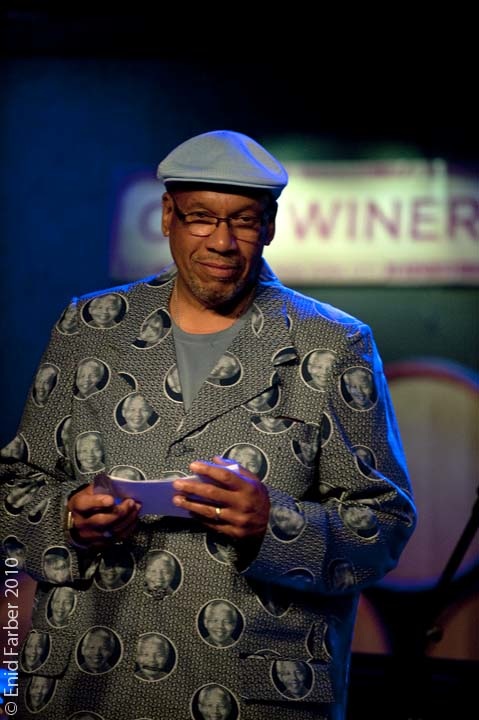At a public forum on jazz organized to conclude the Association of Performing Arts Presenters’ 2011 conference, the focus was as always on the challenges of promoting, perpetuating and profiting from the diverse activities associated with jazz. Ably moderated by Dr. Lawrence Simpson, senior vice-president for academic affairs and provost of Berklee College of Music, the forum started with formal reports from three jazz-focused committees established at the similar forum in 2010 (the third committee, on marketing, never met and is in need of a new chair), and ended with a lively period of open discussion that included questions regarding who was missing from the room (i.e., what segments of the jazz world have not been involved in this group’s efforts to keep things going).
First Erika Floresca, director of education for Jazz at Lincoln Center, gave a concise overview of the APAP jazz education committee’s work, including the recommendation of forging linkage with the Jazz Education Network — which has announced its 2012 conference will be in Louisville, Kentucky, again during the same days in January as APAP. This was explained by JEN board member Willard Jenkins as unavoidable due to JEN members’ interest in avoiding conflict with the NAMM (National Association of Music Merchants) show. (To my mind, the time conflicts are of little matter since the specific professional interests of APAP and JEN members are rather distinct.)
Next, Peter Gordon of Thirsty Ear Records reported on some APAP/jazz-business related issues (such as the establishment of an online newsletter Business Of Jazz), and spoke up for the Jazz Commons project instituted by Marty Ashby of Manchester Craftsmens Guild and supported by the Jazz Forward Coalition. The Jazz Commons, a database that is intended to include information by jazz arts presenters for jazz arts presenters, and the JFC were evidently meant to have been major topics at the APAP forum, but Ashby’s plane home had been rescheduled due to the coming snow storm, and he had left the conference to catch his new flight so was unable to talk about it himself.
Then Christy Farnbauch of the Jazz Arts Group gave a detailed slide show presentation of the Jazz Audiences Initiative, a project funded by MidAtlantic Arts Foundation. The breakouts of data are much too complex to absorb at first go-round; information went past quite quickly. But among key findings were that young people in the survey especially were disinclined to categorize the music they like by style (it was not clear though that they actually do listen without preferences to certain styles or genres); that commercial terrestrial radio remains by far the way most respondents became aware of new artists (a counterintuitive notion, as there is so little commercial terrestrial jazz radio), and that the preferred environment for experiencing jazz is a small club — but not, specifically, a “dive with sticky floors.” (JJA member Ted Panken brought up the fact that the Winter Jazzfest had attracted a New York Times-reported 4000 attendees to five venues that might properly be characterized as dives with sticky floors.)
During the open discussion time that followed, I spoke about the Jazz Journalists Association’s sessions over APAP’s five days that were intent on forging better working relations among presenters, musicians, publicists and journalists, and urged APAP’s jazz presenters to consider jazz journalists as valuable resources for teaching effective uses of new media for jazz, for teaching audiences in advance of concerts about jazz and artists being presented, and for consultations regarding problems specific to the locales in which they’ve worked, developing contacts and expertise. Strong support was voiced for increased jazz educational initiatives in inner city and also less urban locales.
Moderator Simpson’s final questions, as to who wasn’t in the room and what single, doable action APAP could initiate towards improving on the Forum attendees’ goals received a variety of responses. Entrepreneurs and representatives of mainstream media outlets were two groups noted as among APAP’s missing jazz stakeholders. Smaller working groups representing specific stakeholders’ interests, and follow-up of results by bringing those groups to a larger meeting (like the Forum) was suggested. Better coordination of APAP’s jazz committees meetings and more frequent reports on their activities was also requested.
I floated the idea that decentralization and more specification of local issues might work better for problem-solving than centralization; several people asked that jazz activities should be scheduled better at APAP 2012 (that is, before the last session on the conference’s final day). Cards and contact info were collected, then everyone went off to their own destinations. The time for productive follow-up had arrived.




